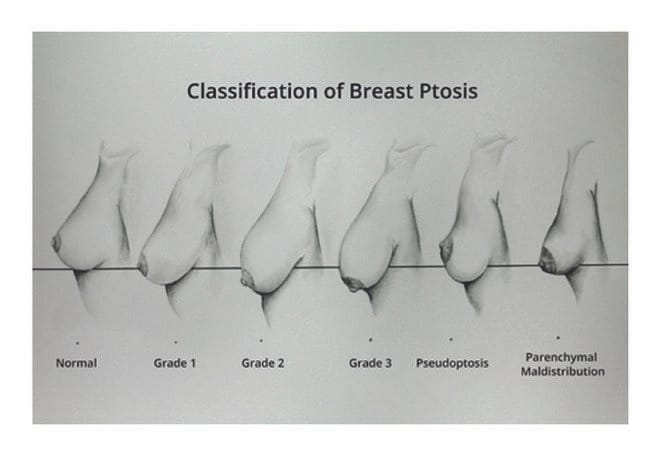In this week's edition
- ✍️ Letter from P'Fella
SIMON will be disappointed, but FATIMA might sue you. - 🤓 The Sunday Quiz
Final round: How well do you know breast augmentation? - 🖼️ Image of the Week
Classification of breast ptosis. - 🚑 Technique Tip
How to do a breast reduction: Learn from Madeline Lejour's herself. - 👁️ What's Trending?
Injectable nipple fillers are trending at the moment! - 📖 What Does the Evidence Say
A combined augmentation-mastopexy or two-stage? - 🔥 Articles of the Week
Subfascial vs. subglandular breast augmentation, breast implant illness, & BIA-ALCL and textured breast implants: with 1 sentence summaries. - 💕 Feedback
Suggest ideas & give feedback!
A Letter from P'Fella
SIMON Will Be Disappointed, But FATIMA Might Sue You
Let's talk about two acronyms that have defined risk assessment in plastic surgery: SIMON and FATIMA. These aren’t just names — they’re essential tools for identifying patients who might become a nightmare post-op.
Meet SIMON
Back in 1999, Gorney and Martello gave us SIMON: Single, Immature, Male, Over-expectant, Narcissistic. SIMON patients were the ones you didn’t want to see on your schedule — likely to have unrealistic expectations and more likely to be dissatisfied no matter how perfect the surgery. SIMON was a way to spot those warning signs early before they turned into lawsuits or endless complaints.
Now Meet FATIMA
Fast forward to today, and we have FATIMA, based on real litigation data from Spain. This acronym identifies traits common in plaintiffs who sue after plastic surgery:
- Female
- Using Antidepressants or Anxiolytics
- Tattoos
- Breast Implants
- Middle-aged
- Access to free legal services
FATIMA is about being proactive. It’s not about rejecting patients but about recognizing potential risks and managing them effectively — keeping communication clear and expectations realistic.
Why It Matters
Whether it's SIMON or FATIMA, the message is clear: managing expectations is just as important as surgical skills. Most legal issues don’t arise from technical mistakes—they come from patients feeling let down or misinformed. These acronyms are a way to help us navigate that delicate balance.
Sure, these labels might feel harsh or simplistic, but they exist for a reason: to protect both the patient and the surgeon. If you know you’re dealing with a FATIMA, you can take extra steps to ensure everything is clear and understood—before anyone gets near the OR.
What Do You Think?
Have you encountered a SIMON or a FATIMA in your practice? Do you think these acronyms help or hurt when it comes to patient care? Share your thoughts!
With love,
P'Fella ❤️
The Sunday Quiz
How Well Do You Know Breast Augmentation?
Welcome to the final round of The Weekly Quiz.
Each edition of thePlasticsPaper includes a quiz question designed to challenge and engage our readers. Keep your wits about you and join in every week — the winner at the end of six rounds will earn you a $100 voucher.

Image of the Week
Classification of Breast Ptosis
In this section, we feature an anatomical illustration. This edition looks at the classification of breast ptosis.
Read more here.

Technique Tip
How to do a Breast Reduction
This edition looks at Madeline Lejour's technique for marking a breast reduction.
You can read more on the technique here.
Marking a breast reduction
What's Trending?
New Trend Spotted: Nipple Fillers
This edition looks at injectable nipple fillers. Read the full article below 👇

What Does the Evidence Say?
Single-Stage vs Two-Stage Augmentation-Mastopexy
Simultaneous augmentation-mastopexy is a complex but increasingly popular procedure that combines breast augmentation with a lift. While some surgeons advocate for a two-stage approach due to opposing force vectors (Kropf et al., 2011), several studies support the safety and efficacy of the one-stage procedure (Doshier et al., 2016; Stevens et al., 2014; Hedén, 2009; Swanson, 2013; Montemurro et al., 2019; Calobrace et al., 2013; Spring et al., 2015).
Complication rates for the combined procedure range from 22.9% to 36.3%, with revision rates between 16.9% and 23.2% (Stevens et al., 2014; Swanson, 2013; Calobrace et al., 2013). These rates are comparable to or lower than the cumulative rates for separate procedures (Swanson, 2013).
Common complications include poor scarring, wound healing issues, and recurrent ptosis (Stevens et al., 2014; Calobrace et al., 2013). With proper patient selection, careful planning, and skilled surgical technique, simultaneous augmentation-mastopexy can be safely performed as a single-stage procedure with acceptable outcomes (Hedén, 2009; Spring et al., 2015).
Articles of the Week
3 Interesting Articles with 1 Sentence Summaries
Subfascial breast augmentation reduces capsular contracture, hematoma, and rippling compared to the subglandular plane, with 93% diagnostic agreement.
Breast Implant Illness (BII) symptoms were reported in 31.3% of patients, with 83.5% showing symptom improvement after implant removal, primarily in cosmetic rather than reconstructive cases.
BIA-ALCL is linked to textured implants, necessitating surgeon awareness, patient surveillance, and adherence to evidence-based recommendations for diagnosis and management.



